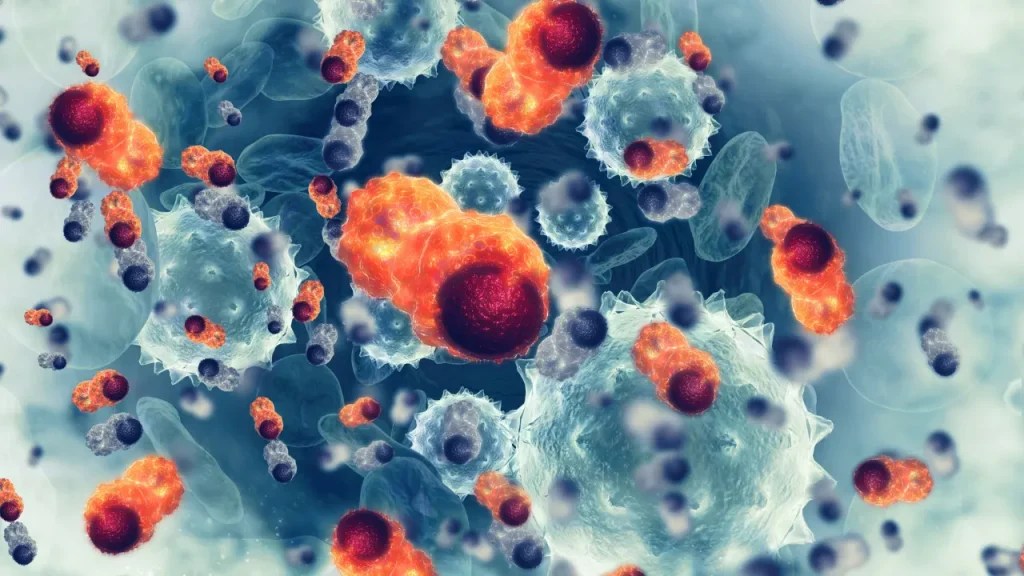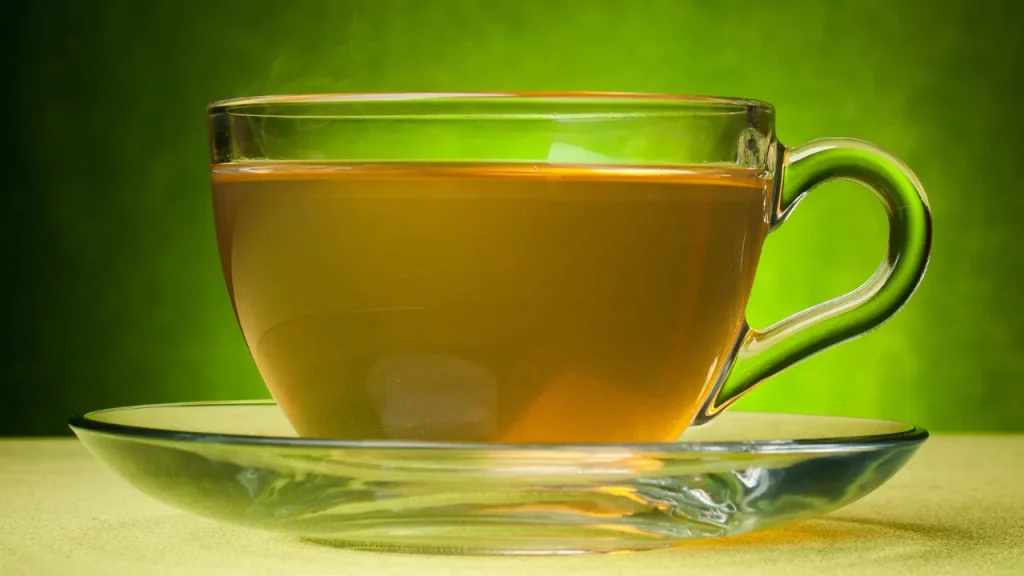Calamint, or Clinopodium nepeta, is a perennial plant mostly found in Europe and Asia. This plant is a member of the Lamiaceae family. It has many potential health advantages. Calamint, which is distinguished by its mint-like smell and perfume, has been employed for generations in traditional therapeutic systems. This article offers a thorough analysis of the dietary supplement Calamint, concentrating on its advantages, ideal dose, negative effects, possible drug interactions, and underlying physiological processes of action. Please read further for information that may assist you in your decision to take Calamint as a supplement.
You May Also Like:
The Best Supplements for Brain Injury: 5 Top Brands Reviewed
Finding the Best Supplements for Brain Fog After COVID: 5 Top Brands Reviewed
Calamint: Benefits, Dosage, Side Effects, Drug Interactions, and Other Important Information is an original (NootropicsPlanet) article.
Nature of Calamint
A perennial herbaceous plant, Calamint, or Clinopodium nepeta, is a member of the Lamiaceae family, sometimes known as the mint or deadnettle family. It was brought to North America but is native to portions of Europe and Asia. The exquisite lilac or white blooms and the gray-green foliage of the Calamint plant are its defining features. Another defining feature is the fragrant odor of mint from the plant.
Calamint grows best in sunny, well-drained conditions and is often found in meadows, wooded areas, and along the sides of highways. Due to the wide range of bioactive substances found in the plant, its leaves have historically been eaten as food and in traditional medicine.
Health Benefits of Calamint
The phytochemical makeup of Calamint is varied, and so are its potential health advantages. It has antioxidant properties, which are mostly derived from phenolic components like rosmarinic acid. These substances might aid the body in fending off oxidative stress, which is a major contributing cause to chronic illnesses including cancer and cardiovascular disease. Furthermore, these chemicals’ anti-inflammatory qualities may help with the signs and symptoms of inflammatory diseases like arthritis.
Research repeatedly shows how the volatile substances, notably pulegone and menthone, have neuroprotective qualities. They could alter neurotransmitter activity, which might elevate mood, lessen anxiety, and improve cognitive performance. Calamint may also be a contender for treating or preventing a variety of illnesses due to its antibacterial action.

Chemical Composition
Calamint contains flavonoids, phenolic acids, and volatile chemicals such monoterpenes and sesquiterpenes as its main bioactive constituents. The bulk of its medicinal potential and its aromatic properties are because of these chemicals. Pulegone, menthone, and isomenthone are the main monoterpenes found in Calamint, whereas germacrene D and -caryophyllene are the main sesquiterpenes.
Antioxidant, anti-inflammatory, and antibacterial effects are conferred by flavonoids and phenolic acids, including rosmarinic acid. They do this, respectively, by scavenging free radicals, suppressing pro-inflammatory cytokines, and interfering with the formation of bacterial cell walls. While this is happening, the volatile substances, especially monoterpenes, impact the nervous system by interacting with different neurotransmitter systems in the brain.
Physiological Mechanisms of Action
The varied phytochemical profile of Calamint, which contains flavonoids, phenolic acids, and volatile chemicals, is primarily responsible for the physiological effects of the plant.
Rosmarinic acid and flavonoids, which are phenolic acids, have anti-inflammatory and antioxidant activities. Their capacity to scavenge dangerous free radicals, which prevents oxidative stress and the resulting injury to cells and tissues, is the source of their antioxidant action. These substances’ anti-inflammatory actions are primarily brought about by their capacity to prevent the synthesis of pro-inflammatory cytokines, which are chemicals that trigger inflammation in response to injury or illness.
The Calamint plant’s distinctive perfume is a result of its volatile chemicals, which are mostly monoterpenes and sesquiterpenes including pulegone, menthone, and -caryophyllene. These compounds also have a range of pharmacological effects. These substances can penetrate the blood-brain barrier, directly affecting how the brain functions. They could alter neurotransmitter activity, which might impact neurological health, mood, and cognition positively.
For instance, it is known that pulegone and menthone have an effect on the GABA neurotransmitter system. The main inhibitory neurotransmitter in the human brain, GABA, is essential for lowering neuronal excitability, which might have soothing effects and perhaps reduce anxiety, a disorder that afflicts millions.


Optimal Dosage and Administration
Calamint clearly has health advantages, but there haven’t been many scientific studies, so finding the right dose has been more difficult. The majority of the current data comes from research on animals and traditional use. Generally speaking, the dose is influenced by the patient’s age, general health, and the illness being treated. Health professionals often advise to use 1-2 tablespoons of dried Calamint leaves per cup of boiling water and steep the tea for 10-15 minutes. Follow the manufacturer’s directions for tinctures or extracts until more precise dose recommendations are provided.
Side Effects
When used properly, Calamint is usually regarded as safe. However, overconsumption may have negative side effects, most often gastrointestinal issues including nausea or diarrhea. In extremely high dosages, the chemical pulegone, which is found in high amounts, has been linked to liver damage.
Regarding possible interactions, the monoterpenes in Calamint may enhance the effects of drugs that affect the central nervous system. Sedatives, anxiety medications, and certain antidepressants fall under this category. Also, when used with anticoagulant medications, its antiplatelet action might conceivably raise the risk of bleeding. Before beginning any new supplement regimen, particularly for those with underlying medical issues or those who are on medication, it is imperative you speak with a healthcare professional.


Potential Substance Interactions
The central nervous system (CNS) activity is linked to volatile chemicals including pulegone and menthone. Calamint may possibly intensify the effects of drugs that affect the CNS, such as sedatives, antipsychotics, or certain antidepressants. This emphasizes your need for careful monitoring and healthcare practitioner consultation while taking these medicines simultaneously and the possibility for greater sedation or cognitive impairment.
The antiplatelet function of Calamint is another possible interaction. According to theory, the plant might make anticoagulant or antiplatelet medications like aspirin or warfarin stronger, which would raise the risk of bleeding. Before adding Calamint to their routine, patients using these drugs should use caution and speak with a doctor.
Finally, combining Calamint with other herbs or supplements that have comparable features (such as those in the mint family or those that have sedative effects) may intensify effects and increase the risk of negative responses. Concurrent usage should thus be handled carefully.
Best Responsible Uses of Calamint
Given its wide range of possible health advantages, Calamint may be a useful addition to one’s diet. However, it must be taken sensibly, according to suggested doses and taking possible interactions into account.
Calamint may be used in food preparations or as a herbal tea to promote overall wellbeing. It may promote healthy digestion, reduce inflammation, and have calming effects when consumed as tea. Additionally, it’s possible cognitive advantages may make it an interesting topic for individuals looking for all-natural brain boosters.
Calamint may be very helpful for those with certain health issues, such as inflammation, oxidative stress, or anxiety. Calamint may be useful in treating certain diseases, but it shouldn’t take the place of standard medical care. It works best when taken in conjunction with other treatments and under the guidance of a medical expert.
There are capsuled versions and tinctures available for anyone thinking about using Calamint as a dietary supplement. Even so, it is important to follow the manufacturer’s instructions and speak with a healthcare professional since there are no standardized dose recommendations.
As a dietary supplement, Calamint has tremendous potential and offers a variety of health advantages because to its distinct bioactive profile. Like any supplement, it should be taken sensibly while taking into account each user’s health situation, any possible drug interactions, and recommended dose ranges.


Calamint:
Conclusion
Calamint is a beautiful, fragrant plant with a long history. It flourishes in various parts of the world. Scientific and medical research shows its capacity to improve and/or facilitate the improvement of multiple health conditions. When administered and consumed correctly, it can even have helpful impacts on brain function. Its unique chemistry positively affects cell health. Whether to help your central nervous system or to fight inflammation, consider Calamint as a supplement to aid you.
References:
- “Chemical composition and antibacterial activity of Clinopodium nepeta subsp. Glandulosum (Req.) Govaerts essential oil.” Retrieved From: https://www.nveo.org/index.php/journal/article/view/128
- “Calamintha.” Retrieved From: https://www.sciencedirect.com/topics/agricultural-and-biological-sciences/Calamintha
- “Calamint – Uses, Side Effects, and More.” Retrieved from: https://www.webmd.com/vitamins/ai/ingredientmono-613/calamint
Important Note: The information contained in this article is for general informational purposes only, and should not be construed as health or medical advice, nor is it intended to diagnose, prevent, treat, or cure any disease or health condition. Before embarking on any diet, fitness regimen, or program of nutritional supplementation, it is advisable to consult your healthcare professional in order to determine its safety and probable efficacy in terms of your individual state of health.
Regarding Nutritional Supplements Or Other Non-Prescription Health Products: If any nutritional supplements or other non-prescription health products are mentioned in the foregoing article, any claims or statements made about them have not been evaluated by the U.S. Food and Drug Administration, and such nutritional supplements or other health products are not intended to diagnose, treat, cure, or prevent any disease.
